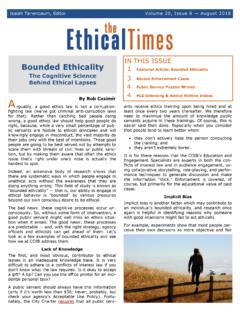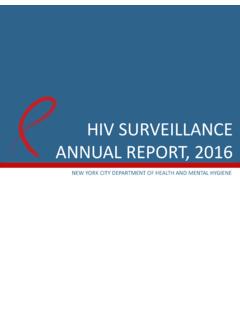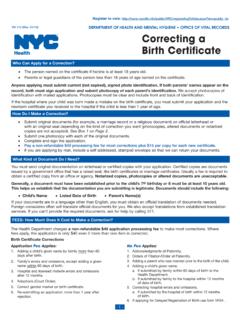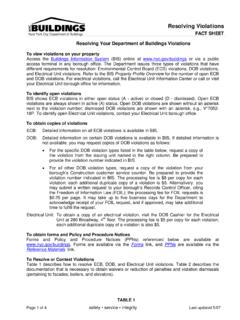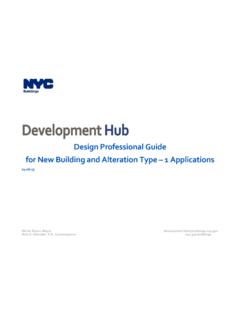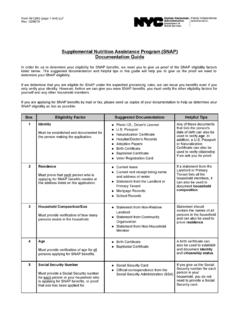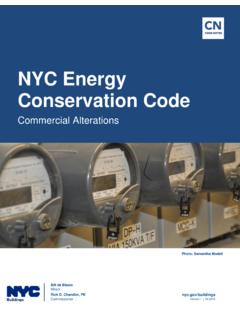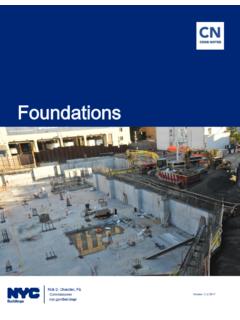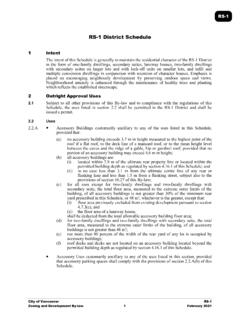Transcription of NYC RESIDENTIAL 1 property taxes one two three family
1 NYC RESIDENTIAL . 1. property taxes one class ONE. two three family homes . WHERE DO YOUR. tax dollars go? Uniformed Agencies 28% (Police, Fire, Sanitation, 31% Education Corrections). Health & Other Agencies 18% Welfare 23% (Transportation, Housing, Parks, etc.). In New york city , property tax represented 48% of all the city tax dollars collected in fiscal year 2021, which ended on June 30, 2021. This chart shows how all city tax dollars were spent. 2 Rev how we calculate your property tax bill 1. DETERMINE MARKET VALUE. step We value your home using statistical analysis that incorporates data such as the recent selling prices of similar properties in your neighborhood.
2 2. DETERMINE ASSESSED VALUE. step A property 's assessed value is a percentage of its market value and is used, with the adjustments described below, to determine the property 's annual tax bill. By law, the assessed value of a class 1 property cannot increase by more than 6% per year or 20% over five years, unless the value increases are due to new construction or renovations. In addition, your assessed value cannot exceed 6% of your home's market value. 3. APPLY EXEMPTIONS ON FILE. step The city of New york offers tax breaks known as exemptions to seniors, veterans, clergy members, people with disabilities, and other homeowners. If you qualify for any of these exemptions, we subtract these amounts from your property 's assessed value to determine its taxable value.
3 (Visit to find out which tax breaks you might qualify for.). 4. property TAX BILL. step We calculate the amount you owe in property taxes by applying the city 's tax rate for c lass 1 properties , a percentage set each year by the city council based, in part, on state law requirements, to your taxable value. If your property receives a type of tax break known as an abatement, we subtract it from your bill to reduce the total amount that you owe. example Single- family home. Owner receives a tax exemption and an abatement Market Value $714,000. Assessment percentage (in this case, 6% of market value) x .06. Assessed Value $42,840. minus exemption - $2,000.
4 Taxable Value $40,840. Tax rate (set each year by city council) x .19963. property tax before abatements $8,153. minus abatement - $396. TOTAL property TAX DUE $7,757. 3. 111 Market Value Valuing Your property 33. step class . class . class . class . The Department of Finance determines a market value for your tax class 1 property using statistical analysis that incorporates data such as the recent selling prices of similar properties in your neighborhood. Similar properties are those that are close in size, style, and age to yours. property TAX CLASSES. properties in New york city are divided into four classes, each valued and assessed differently under the law.
5 Tax class 1 includes one- to three -unit RESIDENTIAL properties . For information about how market values are determined for class 2, 3, and 4 properties , visit 11 33. class . class . class . class . Utility company One- to three -unit equipment and special RESIDENTIAL properties franchise property 22 44. RESIDENTIAL property All other real property , class . class . with more than 4 units, including office including cooperatives buildings, factories, class class & condominiums stores, and hotels 22 44. class . class . class class . 4. 2 Assessed Value Assessing Your property step Your home's assessed value is a percentage of its market value. State law limits how much the assessed value of a class 1 property in New york city can increase.
6 Your assessed value cannot rise more than 6% in one year or 20% over five years, no matter how quickly the market value of your home increases, unless you make a physical change to the property , such as an addition or renovation. Due to these caps, most class 1 properties are assessed at less than 6%. As a result of the caps, you may find that your assessed value continues to increase even as your market value decreases. That is because it can take years for the assessed value to catch up to the market value. The table below shows an example of a property whose assessed value increased even as the market value decreased. WHY HAS YOUR property 'S ASSESSED VALUE CHANGED?
7 Your assessed value can change for a number of reasons: Your property 's market value has changed. You made a physical change to the home, such as an addition or renovation, a nd these physical changes are not subject to the annual or five-year caps on increases to your assessed value for that year. You lost a tax exemption or abatement, or its value was reduced. Your assessed value is catching up to prior changes in market value, a s in the table below. Example of a Year 1 Year 2 Year 3. 1-3 family home Market Value 100,000 150,000 140,000. Assessed Value if 6,000 9,000 8,400. increases were not capped Assessed Value with 6,000 6,360 6,741. caps on increases 5.
8 3 step Exemptions Reducing Your property Tax The city of New york offers tax breaks known as exemptions to seniors, veterans, clergy members, people with disabilities, and others. If you are granted an exemption, i t is subtracted from the assessed value of your home, reducing your taxable value. (An exemption differs from an abatement, a type of tax break that reduces your tax due after the tax has been calculated.) Your July property tax bill shows the exemptions you will receive for the tax year beginning July 1. FINDING THE RIGHT EXEMPTION(S) FOR YOU. STAR Senior Citizen Disabled Enhanced (School Tax Relief) Homeowners' Homeowners'. STAR*. Basic STAR* Exemption (SCHE) Exemption (DHE).
9 Available to owners of Available to owners of Available to owners Available to owners ELIGIBILITY. houses, co-ops, and houses, co-ops, and 65+ with annual with disabilities and condos with an annual condos who are 65+ income of $58,399 or annual income of income of $250,000 with an annual income of less. $58,399 or less. or less. $92,000 or less. Tax savings: Tax savings: Reduces assessed Reduces assessed BENEFIT. approximately $300/ approximately $600/year value up to 50%. value up to 50%. year. Visit Visit or Complete an Complete an or call (518) 457- call (518) 457-2036. application, available at application, available at 2036. (If you currently receive TO APPLY.)
10 Basic STAR, you can apply for E-STAR with the Department of Finance: ). March 15 March 15 March 15 March 15. DEADLINE. * In 2016, STAR was changed by state law from a property tax exemption to an income tax credit. If you received the exemption as of tax year 2015-16 and later lost it, you can apply with DOF to have it restored. Current recipients of the STAR property tax exemption can continue to receive it. New applicants must apply to the state for the credit. The credit is available to households with annual income of $500,000 or less. If you are eligible, you will receive the credit in the form of a check. The dollar value of the credit will generally be the same as the property tax exemption.
